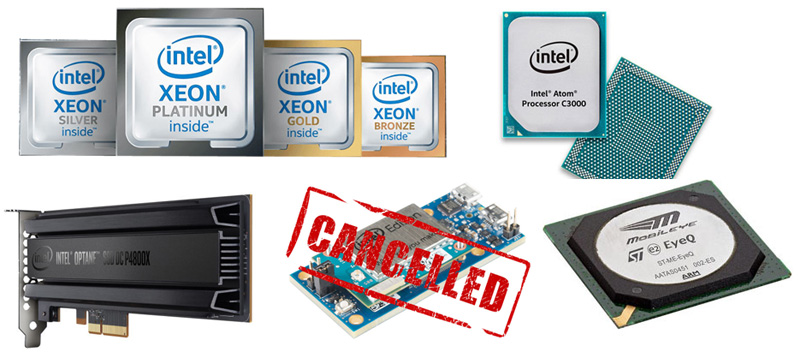Approaching the new year traditionally causes a desire to take stock of the old. Following this desire, the Intel blog team decided to put all the most important things in one company that happened in the company in 2017 with relevant GeekTimes topics. There were plenty of important events: the launch of new products and the closure of existing ones, new brands, acquisitions and storylines - about all this under the cut. There you will find the most beautiful videos created by Intel for this year.
 Intel's key priority in 2017
Intel's key priority in 2017 was the development of software and hardware artificial intelligence (AI). Over the past few years, Intel has acquired a number of companies related to this area, and in 2017 we saw their new products. This and FPGA
Intel Cyclone 10 , the brainchild of the former Altera, and the
Movidius Neural Compute Stick - "artificial intelligence on a flash drive." Another interesting announcement related to AI is the
Intel Loihi Self-Learning Neuromorph Processor , although there are still not enough details for any assessments. Another trend of the year - unmanned vehicle systems. In the outgoing year, we learned about a
joint project with Audi , a
long-term cooperation with Google ... and also about the purchase of Intel developer of information tools for cars, the
company Mobileye . We are waiting for announcements from him next year?
In the “closing the year” nomination , the lead is definitely the cessation of the development of several Intel product families for the “Internet of things”:
Intel Edison, Galileo and Joule fell under the distribution, and Arduino 101 joined them a little later. This is one of the largest retreats in the history of Intel. However, this does not mean that Intel completely abandons the "Internet of things". Its current priorities are original solutions that do not have a large number of analogs (such as the
Compute Card ), powerful but economical processors (in 2017
the Intel Atom C3000 family appeared) and network devices for the latest generation wireless networks (
XMM was announced a month ago)
8060 - the first 5G modem Intel ). Intel will use all these components in its automotive projects located at the junction of the Internet of Things and AI.
Another
storyline of the year is the movement to the market of a family of drives based on 3D XPoint memory - Intel Optane. Recall that the first product information appeared at the beginning of 2015, in 2016 the deadlines for the appearance of commercially available samples were designated, and so, in March 2017, the first PCIe NVMe format drive appeared -
Intel Optane DC P4800X . Literally, another reincarnation of Intel Optane was immediately introduced -
in the form of M.2 modules for home computers. After that, the Optane line
was expanded with several more enthusiast models.
Intel NUC microcomputer sales started with the Optane module preinstalled. And at the end of the year, information appeared that the volume of Optane DC P4800X drives was
increased to 750 GB , and the Intel Optane 900P drives would
reach 1.5 TB . As you can see, the plot is actively developing and will definitely continue in 2018.
The intrigue of the year, we propose to consider experiments with the Intel graphics subsystem. Recall briefly those events that had time to be accomplished in 2017. In early November, Intel
announced the Core processors with the AMD graphics core . Literally immediately after this, it became known that the company was creating a division that
would deal with discrete graphics . Thus, from the point of view of the graphic component of the Intel platform, everything becomes much more interesting and diverse. Important events in this topic are expected to occur early next year, most likely at the very beginning, at CES. In the meantime - intrigue.
In 2017, we saw
new names on well-known products. At first, top home processors for maniac enthusiasts stood out
in a separate line of Intel Core i9 . Then
the next generation Intel Xeon family got a new surname Scalable and Platinum, Gold, Silver and Bronze tabs. However, the matter is no longer in precious metals - first of all
, the concept of the Xeon line has changed significantly . And finally, the mod has reached desktop processors -
Intel Pentium Gold first appeared, and then
Pentium Silver . There is nothing more to rename.
Next year will be special for Intel - in July it
will be 50 years old . We want to wish the company wise decisions and interesting products - and in a year we will write about them all.